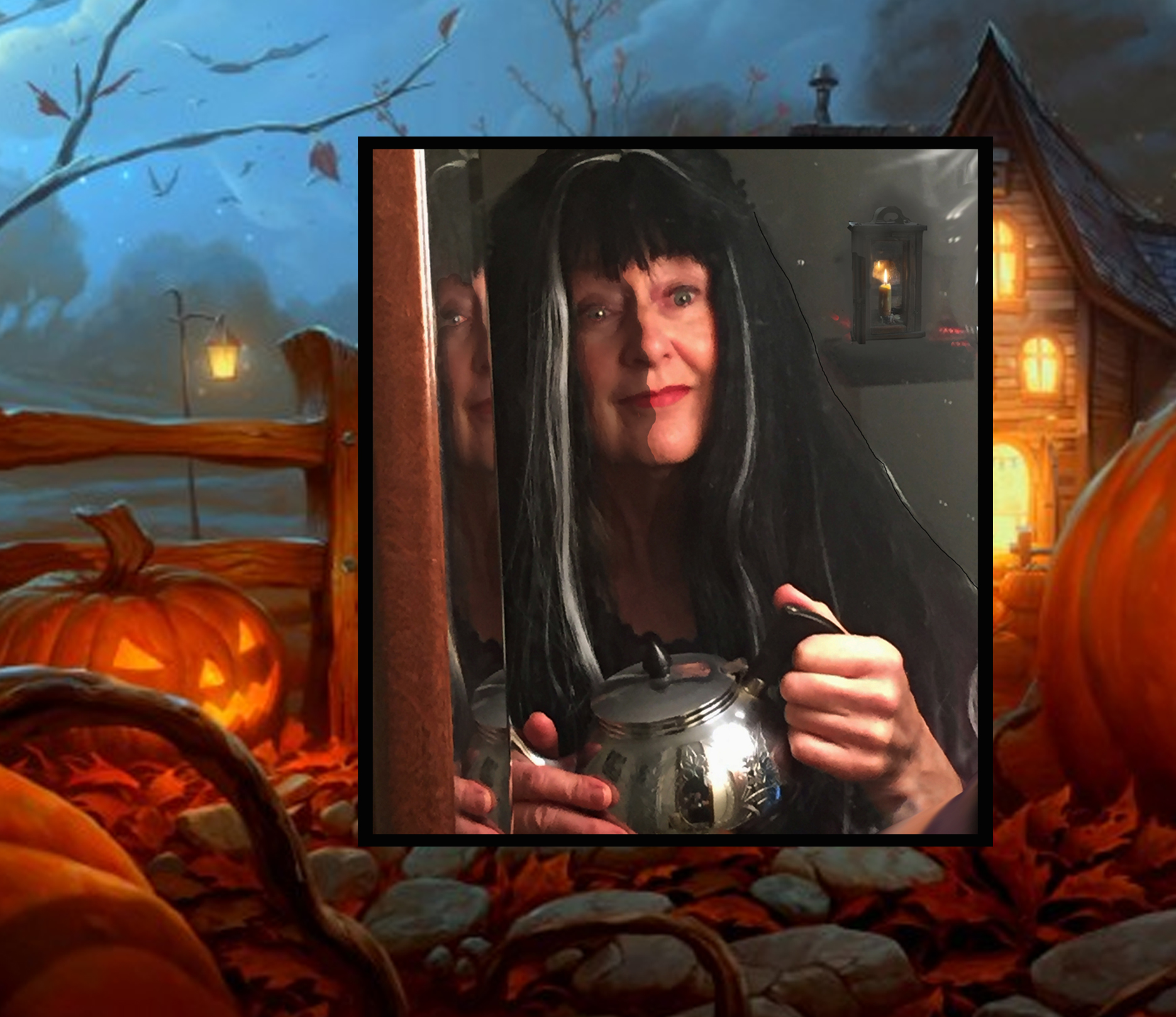Welcome…
Come, sit by the fire and I’ll pour you a special cup of tea – Midnight Fog, it’s called.
Recipe for MIDNIGHT FOG…
- Steep a bag of Red Rooibos or Honeybush tea in 1/2 cup of boiling water.
- Whip 1/2 cup of chocolate milk (or substitute like chocolate almond milk) in blender
- Pour into a saucepan and heat.
- Whisk to create frothy foam.
- Add the heated chocolate milk to tea.
- Garnish with pumpkin spice and raw honey.
HALLOWEEN lends itself naturally to villains, expressing themselves in clever and creative attire. If it’s not the headless horseman or the age-old Frankenstein, it’s Darth Vader or Zombies hulking the dark streets in our neighborhoods.
This brings us to my favorite topic – storytelling – and in this case, talking about the very important, three-dimensional character, the antagonist.
Webster’s dictionary defines antagonist as… “one that contends with or opposes another – the adversary or opponent.”
What would storytelling look like without a well-developed, strong, fierce and compelling antagonist who’s as well thought-out and multi-dimensional as the hero (or protagonist)?
You wouldn’t have much of a story now, would you?
The hero depends on the antagonist to challenge him, force him to overcome… to change… to win.
The antagonist can be:
- a main character.
- one’s dark side vs one’s “good” side (Dr. Jekyll and Mr. Hyde).
- things like the weather (a hurricane, volcano, 40 below freezing temperatures) which the protagonist must overcome or avoid.
- A spouse who has lost his affections for the once, love of his life, and gone astray.
Most times, we think of the antagonist as the villain. Is that always the case?
Could the hero be the villain and the antagonist his/her adversary? Something to think about.
Well, the tea-pot is empty. Time to spice up my antagonist villain in my latest book – Treasure Trap – coming soon. And… here it is….
UPDATE: Treasure Trap is now available on Amazon.

